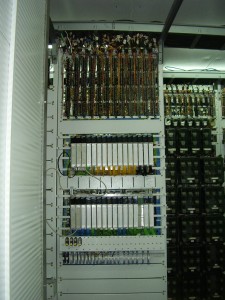
The relay-processor centralization of arrows and signals (RPC) with a long control range allows the control of hundreds of arrows and signals to be concentrated at one post of the station. processing capacity of stations. Microcontrollers in combination with a computer make the system reliable, convenient and easy to maintain, at a significantly lower cost compared to relay systems.
The RPC system performs the following functions:
- Technological management of objects at the station (the main functions of the EC for the centralization of arrows and signals);
- Control of the state of control and control objects at the station;
- Ensuring the safety of trains;
- Diagnostics;
- Interactions with the operator;
- Docking with other ACS systems;
- Archiving of information about the state of management and control objects, operator actions, system diagnostics data.
Staff management functions:
- Installation of routes of any complexity, length and category;
- Cancellation of the route (both in advance and completely closed);
- Artificial opening of routes;
- Individual arrow control;
- Closing/unlocking arrows;
- Opening invitation signals;
- Route transfer arrows;
- Automation of chipboard operations for maneuvering operations;
- Fencing of roads;
- Auxiliary arrow translation (with VKS button);
- Disabling the arrow engines;
- Turning on the alarm when a malfunction occurs;
- Setting the arrow on the layout.
Additional functions:
- Keeping a log of messages for a full day with fixing the date and time of events regarding:
-
- state of objects of control and management;
- turning on/off the ARM;
- control commands that were introduced;
- diagnostic information system;
- Archiving of events for the last 31 days;
- The possibility of linking with information systems of the highest level.
Diagnostic functions:
- Control of the condition of technical means and management facilities;
- Monitoring the occurrence of failures and the transition of individual devices of the system to a protective state;
- Control of the state of power supply devices.
Control and display functions:
- Control of the current state of management objects;
- Control of the correctness of the route setting;
- Control of the actions of the person on duty at the station, especially in situations of partial or complete shutdown of the CSB devices;
- Display of the road development of the station;
- Displaying the current status of control objects;
- Display on the screen of the monitor of the actions of the station attendant.






